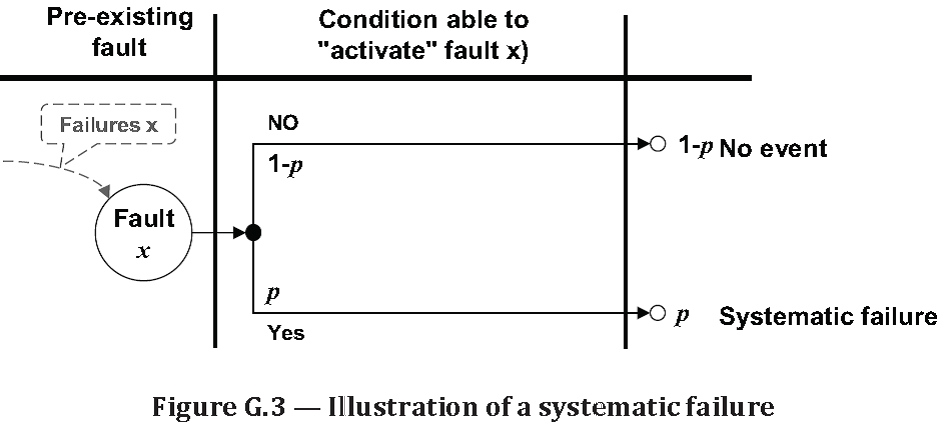Definition(s)
Systemic Failure
holistic failure
failure at system level which cannot be simply described from the individual component failures of the
system
Note 1 to entry: Systemic/holistic principles have been concisely summarized by Aristotle by “
The whole is more
than the sum of its parts”.
Note 2 to entry: Components have only failure modes. Those failure modes become dangerous, safe or spurious
only when the components are implemented into a safety “system”. This is why dangerous, safe or spurious failures
are typical systemic failures. For example the failure “fail to close” of a valve is dangerous only if it belongs to a
safety system closing this valve on demand. Otherwise this failure mode does not matter.
Note 3 to entry: “Systematic” failures (i.e. occurring in a deterministic way when given conditions are encountered,
see 3.2.17) and “systemic” failures should not be confused.
Source: ISO/TR 12489:2013(E) Reliability modelling and calculation of safety systems. Global Standards
Systemic Failure
failure that consistently occurs under particular conditions of handling, storage or use
Note 1 to entry: The cause of a systematic failure originates in the specification, design, manufacture, installation,
operation or maintenance. Its occurrence is precipitated by particular conditions of handling, storage, use or
maintenance (see Figure G.3)
Note 2 to entry: Corrective maintenance without modification will usually not eliminate the failure cause.
Note 3 to entry: A systematic failure can be reproduced by deliberately applying the same conditions, e.g. in
verifying the failure cause (from IEC 60050–191 ed3[14]). Systematic failures are non-random failures (see 3.2.16).
Note 4 to entry: In operation, a systematic failure is a manifestation of a systematic fault (i.e. a pre-existing state
of the system).
Note 5 to entry: The software systematic failures, called “bugs”, are example of systematic failures: they are due
to pre-existing bugs (i.e. faults) and they occur when the input data activate them.
Note 6 to entry: Systematic and systemic (which means “at system level”) failures (see 3.2.8) should not be confused.
[SOURCE: IEC 60050‑191]
 Source: ISO/TR 12489:2013(E) Reliability modelling and calculation of safety systems. Global Standards
Source: ISO/TR 12489:2013(E) Reliability modelling and calculation of safety systems. Global Standards